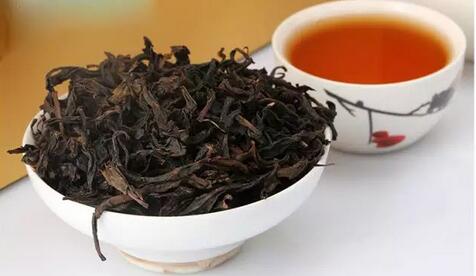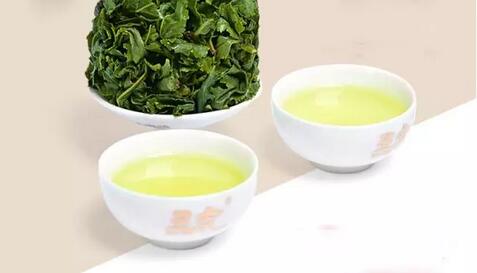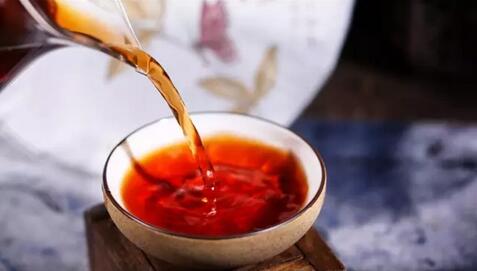Have you ever tasted a 'sour' note while drinking tea? What kinds of sourness exist in tea, and why does it occur? Which types of sourness are desirable, and which are not? Let's explore these questions together!

Wuyi Sourness
Some high-quality Wuyi rock teas may develop a natural 'Wuyi sourness' during aging.
In the mid-19th century, Western tea scholars discovered 'tannin' (catechins) in Wuyi rock tea and isolated 'Wuyi acid,' later confirmed to be a mixture of beneficial compounds such as gallic acid, oxalic acid, tannins, and quercetin. In 1847, Rollet isolated 'Wuyi acid' from Wuyi rock tea. In 1861, Hasenwetz confirmed that Wuyi acid is a mixture of gallic acid, oxalic acid, tannins, and quercetin.
It's important to distinguish between natural Wuyi sourness and sourness caused by processing errors. Wuyi sourness is 'sour but not cloying,' whereas sourness from mistakes in processing can induce a nauseating sensation, referred to as 'sour retching.' Therefore, don’t blindly pursue Wuyi sourness. As the saying goes: 'Wuyi sourness is good, but don’t overindulge!'
Conclusion: Authentic Wuyi sourness is good, while 'sour retching' is undesirable!

Tieguanyin Sourness
Tieguanyin's false sourness, locally called 'green sourness,' results from short fermentation time—often tea picked and processed on the same day. Another type is 'green king sourness,' the traditional fermentation-derived sourness.
The sourness in Tieguanyin, as described by tea connoisseurs, is a subtle tartness that spreads from the cheeks to the throat, accompanied by a slight astringency, sweet aftertaste, and a tightening sensation on the sides of the tongue. This is often noticeable in the first three infusions of Tieguanyin with pronounced sourness, which usually also has a strong sweet aftertaste and rich flavor!
'Drag sourness' is caused by a new processing method, which is inherently flawed, let alone the sourness it produces.
Conclusion: Green sourness and green king sourness are good, while drag sourness is undesirable!

Black Tea Sourness
Generally, fermented tea may have some sourness, but if the sourness is overly prominent, it's likely due to overly dense stacking during fermentation or over-fermentation. Black tea is fully fermented, and if fermentation is excessive or poorly timed, drying can lead to sourness.
Additionally, prolonged storage or improper storage conditions, such as exposure to moisture, can also cause sourness. Brewing temperature is another factor—delicate black teas may develop pronounced sourness if brewed with water that's too hot. Theoretically, strong sourness in black tea results from processing errors and is undesirable!

Ripe Pu-erh Sourness
For Pu-erh, ripe Pu-erh naturally exhibits sour, sweet, bitter, astringent, fragrant, smooth, and heavy characteristics. Its sourness can transform into sweetness, lingering in the throat without tightening, and the tea soup should be smooth. Well-aged ripe Pu-erh may also display fruity sourness. (Desirable)
On the other hand, improper pile-fermentation during processing can result in an unpleasant sour and spoiled flavor. This negative sourness feels unpleasantly sharp and may cause tightness in the cheeks. (Undesirable)
Where Does 'Sourness' Come From?
The sourness in tea can be categorized into positive and negative types. Positive sourness can be seen as one of the flavor manifestations of active substances in tea. Negative sourness often arises from failures in processing or storage.

Main Sources of Sourness:
1. Wild tea, due to its raw material, often has a naturally sour taste.
2. Low picking grade, such as one bud and four leaves with old stems. Old stems are harder to fully kill during processing, increasing the likelihood of sourness in the final product. Tea picked in summer may also develop sourness, especially in regions entering the rainy season with high moisture content.
3. During manual fixation, if the 'tossing and covering' method is overused or fixation and rolling are too light, the final tea is more likely to develop sourness.
4. If tea leaves are not dried promptly during sun-drying, high moisture content can lead to sourness in the final product.
5. During fermentation, under high temperature and humidity or microbial activity, if fermentation is not controlled properly and drying is delayed, the final tea may develop sourness.
Points 2-5 primarily involve moisture leading to anaerobic fermentation, which produces organic acids.
Sourness in tea isn’t always a sign of poor quality—it depends on its concentration in the tea soup and the balance among other components.
Good tea should exhibit a harmonious balance of 'sour, sweet, bitter, astringent, fragrant, sweet, smooth, and heavy' flavors.
Understanding tea's 'sourness' and learning to distinguish between positive and negative sourness is fundamental knowledge for every tea lover.